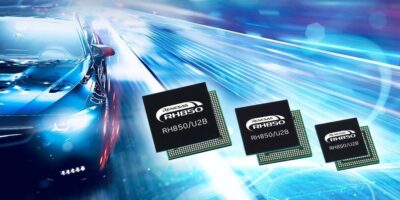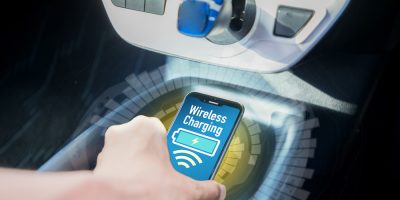Microcontrollers designed to address the growing need to integrate multiple applications into a single chip and unify the electronic control unit (ECU) in vehicles, make up the RH850/U2B series.
Renesas says the cross-domain microcontrollers are built for the rigorous workloads required by vehicle motion in hybrid ICE and xEV traction inverter, high-end zone control, connected gateway and domain control applications.
They join the company’s RH850/U2A microcontrollers for body and chassis control systems. Customers can also combine the microcontrollers with Renesas’ R-Car S4 SoC devices for automotive central gateway systems for scalable electronic / electrical architectures that are deemed the architectures for future vehicle generations.
Naoki Yoshida, vice president, automotive digital products marketing division at Renesas, said: “The RH850/U2B microcontrollers . . . performance, memory integration and hardware-based support for new zone- and domain-control applications, particularly for powertrain and HEV/EV, while maintaining the stringent cost, safety, and security parameters required for these automotive systems”.
Designed for zone and domain applications, the 28nm RH850/U2B microcontrollers build on key functions from Renesas’ RH850/E2x series for powertrain and RH850/C1M-Ax series for HEV/EV motor control. At the same time they add enhancements including an accelerator IP, higher performance levels and increased security. This feature set enables users to integrate multiple ECU functions into a single ECU while adhering to stringent automotive-grade safety, security and real-time operation requirements.
The integrated hypervisor hardware-based virtualisation assist function allows multiple software systems with up to ISO26262 ASIL D functional safety levels to operate independently, without interference. It also reduces the virtualisation overhead to maintain real-time execution. Quality-of-service (QoS) provides a latency monitor and regulation function for all bus masters to ensure minimum bandwidth is always available. The RH850/U2B microcontrollers support safe and rapid full no-wait over the air (OTA) software updates with dual-bank embedded flash that allows the ECU to update and save images while the microcontrollers are in active mode and enables the ECU to operate from the original code if a failure occurs. Integrated motor control accelerator IP (EMU3S) works in conjunction with multiple dedicated motor control timer structures like GTM v4.1 and TSG3 to reduce CPU processing loads while achieving high-speed rotation. Dedicated data flow processor (DFP) accelerator IP enables the CPU to offload compute-heavy operations for complex control.
The microcontrollers have up to eight 400MHz performance cores with four of them in lockstep architecture, with built-in flash targeting ASIL-D and ASIL-B applications. Integrated security functions support the Evita Full standard, including elliptic curve cryptography. There are multiple instances of AES128 lock-step modules for conflict-free, deterministic safe and secure communication.
The dedicated resolver / digital converter accelerator IP (RDC3X) processes analogue signals from a motor rotational angle sensor (resolver) or an inductive position sensor.
The DR1000C is a RISC-V-based parallel co-processor IP with vector extension (DFP), licensed from NSITEXE, which supports the fast execution of complex mathematical algorithms.
Communication interfaces include Gigabit Ethernet TSN with switch support.
The RH850/U2B microcontrollers will be sampling from April 2022.







